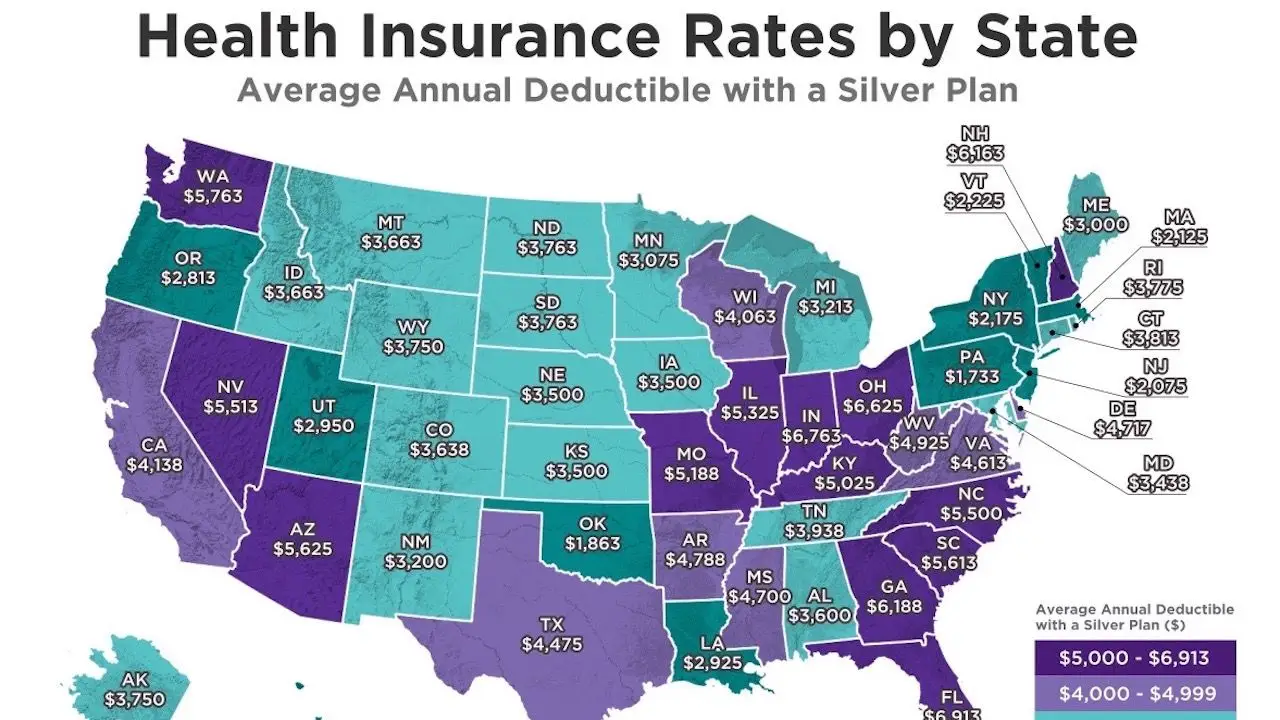Health insurance is an essential part of financial planning, but it can be difficult to know how much you should expect to pay. The average health insurance cost in the United States varies depending on a number of factors, including your age, location, and the type of plan you choose.
According to the Kaiser Family Foundation, the average annual premium for employer-sponsored health insurance was $22,221 in 2021. This includes the amount paid by both the employer and the employee. For individual health insurance plans, the average annual premium was $4,955 in 2021.
These are just averages, however, and your actual costs may be higher or lower. If you are healthy and have a low risk of developing major medical problems, you may be able to find a plan with a lower premium. However, if you have a pre-existing condition or are at high risk for developing a serious illness, you may have to pay more for health insurance.
The type of plan you choose will also affect your costs. Health maintenance organizations (HMOs) and preferred provider organizations (PPOs) typically have lower premiums than other types of plans, but they also have more restrictions on the doctors and hospitals you can use. Point-of-service (POS) plans and high-deductible health plans (HDHPs) offer more flexibility, but they also have higher premiums.
It is important to shop around and compare different health insurance plans before you make a decision. Be sure to consider the premium, deductible, copayments, and coinsurance. You should also make sure that the plan covers the doctors and hospitals you want to use.
If you are struggling to afford health insurance, there are a number of programs that can help. The Affordable Care Act (ACA) provides subsidies to help low- and moderate-income families afford health insurance. Medicaid is a government program that provides health insurance to low-income individuals and families. CHIP is a government program that provides health insurance to children and pregnant women.
What factors affect the average health insurance cost in the United States?
The average health insurance cost in the United States varies depending on a number of factors, including:
- Age: Health insurance premiums tend to increase with age. This is because older people are more likely to develop health problems that require medical treatment.
- Location: Health insurance costs can vary significantly from state to state. This is due to differences in the cost of medical care and the number of health insurance providers in each state.
- Type of plan: There are many different types of health insurance plans available, each with its own unique set of benefits and costs. The type of plan you choose will have a major impact on your monthly premium.
- Health status: If you have a pre-existing condition or are at high risk for developing a serious illness, you may have to pay more for health insurance. This is because insurance companies consider you to be a higher risk.
How can I lower my health insurance costs?
There are a number of things you can do to lower your health insurance costs, including:
- Shop around: Compare health insurance plans from different providers to find the best deal. Be sure to consider the premium, deductible, copayments, and coinsurance.
- Choose a plan with a higher deductible: Plans with higher deductibles typically have lower premiums. However, you will have to pay more out of pocket if you need medical care.
- Use a health savings account (HSA): HSAs are tax-advantaged savings accounts that can be used to pay for qualified medical expenses. You can contribute up to $3,650 to an HSA in 2023 ($7,300 for families).
- Get regular checkups and screenings: Preventive care can help you avoid developing serious health problems that can lead to expensive medical bills.
What if I can’t afford health insurance?
If you are struggling to afford health insurance, there are a number of programs that can help. The Affordable Care Act (ACA) provides subsidies to help low- and moderate-income families afford health insurance. Medicaid is a government program that provides health insurance to low-income individuals and families. CHIP is a government program that provides health insurance to children and pregnant women.
Conclusion
Health insurance is an essential part of financial planning. By understanding the factors that affect the average health insurance cost in the United States, you can make informed decisions about your health insurance coverage. If you are struggling to afford health insurance, there are a number of programs that can help.
FAQ
What is the average health insurance cost in the United States?
The average annual premium for employer-sponsored health insurance was $22,221 in 2021. This includes the amount paid by both the employer and the employee. For individual health insurance plans, the average annual premium was $4,955 in 2021.
What factors affect the average health insurance cost in the United States?
The average health insurance cost in the United States varies depending on a number of factors, including age, location, type of plan, and health status.
How can I lower my health insurance costs?
There are a number of things you can do to lower your health insurance costs, including shopping around, choosing a plan with a higher deductible, using a health savings account (HSA), and getting regular checkups and screenings.
What if I can’t afford health insurance?
If you are struggling to afford health insurance, there are a number of programs that can help. The Affordable Care Act (ACA) provides subsidies to help low- and moderate-income families afford health insurance. Medicaid is a government program that provides health insurance to low-income individuals and families. CHIP is a government program that provides health insurance to children and pregnant women.
How can I find affordable health insurance?
There are a number of ways to find affordable health insurance. You can shop around and compare plans from different providers, use a health insurance broker, or contact your state’s health insurance marketplace.
Conclusion
The average health insurance cost in the United States varies depending on a number of factors, including age, location, type of plan, and health status. However, there are a number of things you can do to lower your health insurance costs, including shopping around, choosing a plan with a higher deductible, using a health savings account (HSA), and getting regular checkups and screenings.
If you are struggling to afford health insurance, there are a number of programs that can help. The Affordable Care Act (ACA) provides subsidies to help low- and moderate-income families afford health insurance. Medicaid is a government program that provides health insurance to low-income individuals and families. CHIP is a government program that provides health insurance to children and pregnant women.
To find affordable health insurance, you can shop around and compare plans from different providers, use a health insurance broker, or contact your state’s health insurance marketplace.
For more information on health insurance costs, please visit the website of the Kaiser Family Foundation: https://www.kff.org/health-costs/
Invitation to comment and share
Please share your thoughts on the average health insurance cost in the United States in the comments below. Have you found any ways to lower your health insurance costs? What advice would you give to others who are struggling to afford health insurance?







Leave a Comment